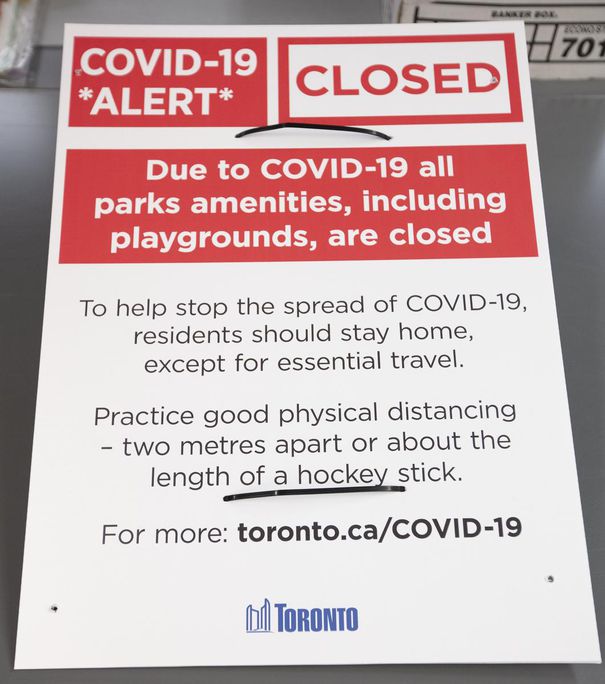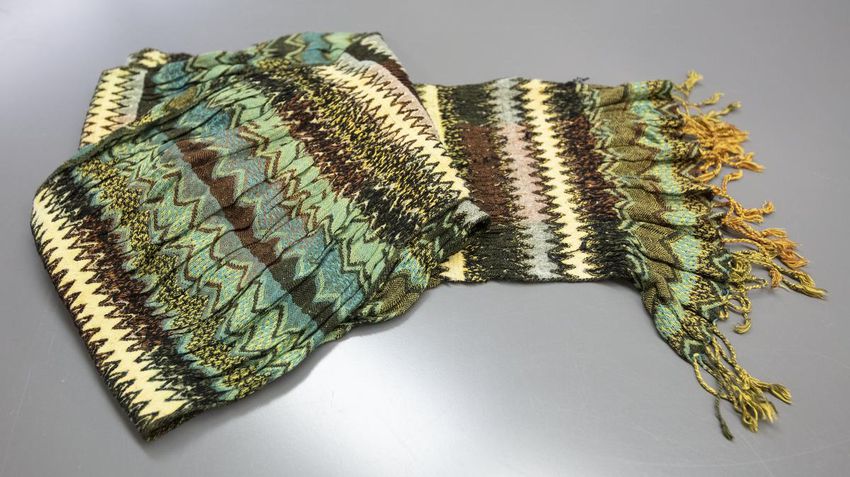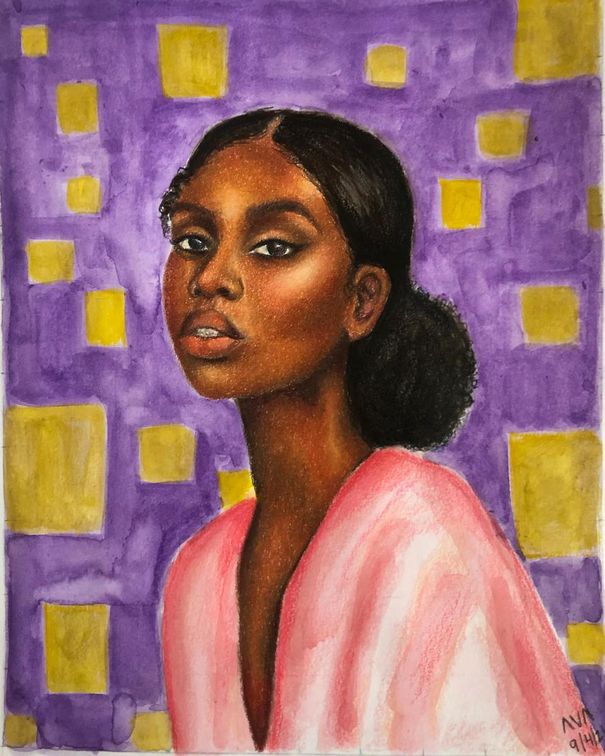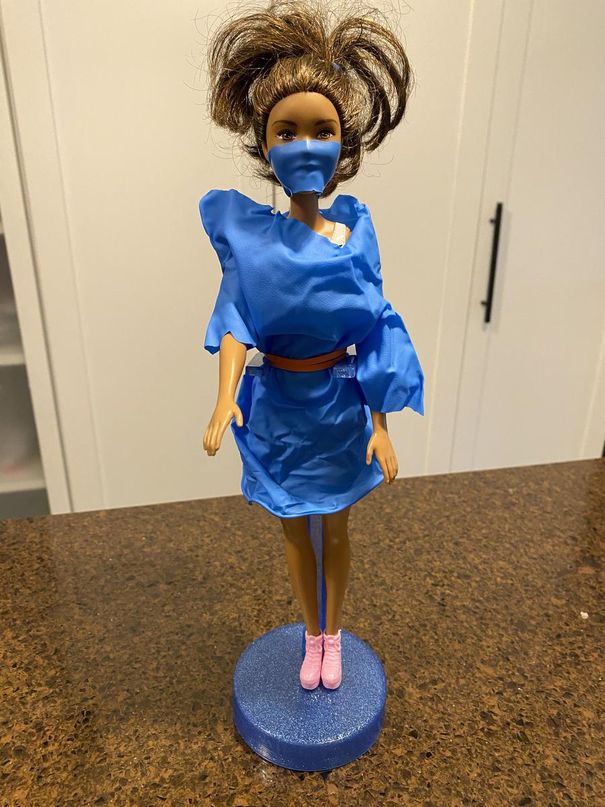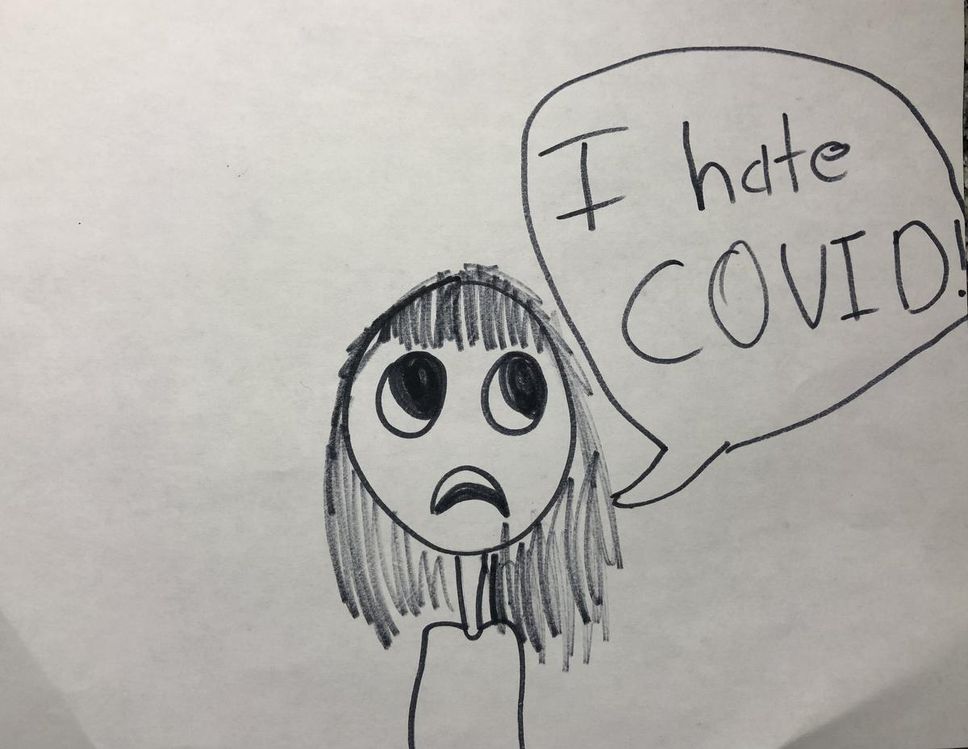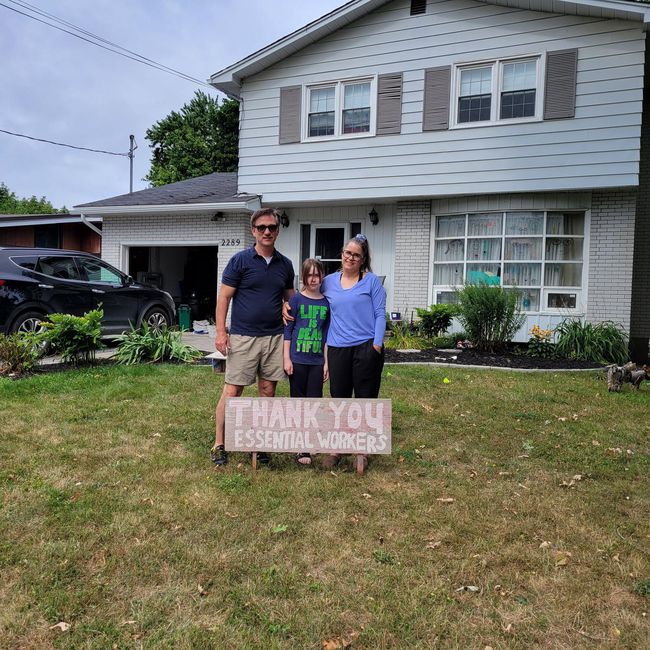As Ontarians lined up for vaccinations, epidemiologist Amy Greer was knitting.
She started her scarf when health-care workers were among the first to be vaccinated on Dec. 14, 2020, and knitted for more than a year, color-coding her yarn to reflect the daily progress. There was gray to purple to blue as the campaign ramped up, shades of green as hundreds of thousands a day secured their first doses in the spring of 2021, a lull of blue through the late summer, and an intense flash of the darkest green once Omicron hit. There are silvery white threads on days when her family members were vaccinated. The first belongs to her grandparents of her, the last to her children of her. It was probably 10 minutes of knitting a day for the University of Guelph professor, the gentle clacking of needles just out of frame during conference calls.
She finished at the end of December 2021, and the chevron-stitched scarf told a seven-foot story of one of the biggest mobilization efforts in the province’s history. When she wore it this winter, her husband was surprised. Shouldn’t the scarf be protected? She wasn’t sure. She was shocked at the idea that a museum might want it.
Two years ago, the old way of life came to an abrupt end. Cruise ships quarantined as COVID spread on board. The NBA suspended its season. Office workers were sent home and the financial district felt like an abandoned movie set. Since then, museums have been collecting objects to help future generations understand the tumult of these times. Some are motivated by what they wished they had since the 1918 pandemic. Many want to ensure that the diversity of experience is not forgotten. The story of these last two years is not straightforward, nor is it over. The pandemic carries on, even though mask mandates are being dropped, and more workers return to the daily commute. There will eventually come a time when we are all gone, and no one will remember how this felt. Museum staff are scouring the country to find the objects that will speak for us, about a complicated story of death, survival, upheaval, anger and hope.
For most of the pandemic, Alex Avdichuk was alone in the city’s Atlantic Avenue warehouse, where Toronto keeps its historical artifacts, like a 2003 concert ticket for SARSstock, 18th-century military uniforms, and a piece of the Avro Arrow.
In the frantic days of that first lockdown, most heritage staff were redeployed. Neil Brochu, the supervisor of collections and outreach, spent most of the early pandemic working in a shelter. Avdichuk spent half her days on roving security detail, checking in on the city’s 10 museums, emptying the garbage, making sure there was no food left behind in the fridge.
As supervisor of collections and conservation, she was also keeping watch for artifacts, as she always does. Like in 2013, when then-major Rob Ford showed up at a Pride flag-raising, to read a proclamation on behalf of council. His appearance by him at his first Pride Toronto event was a surprise, drawing “qualified praise from the gay community he has repeatedly angered,” the Star’s Daniel Dale reported at the time.
“Of course, we instantly called up city protocol and said, we want that flag,” Avdichuk says.
When the playgrounds were shut down, they called up city departments to save a few signs. When a Twitter account brought attention to Dr. Eileen de Villa’s habit of wearing a different scarf at each public health briefing, they asked Toronto’s medical officer of health for one of them, and she obliged. When distilleries retooled to produce hand sanitizer, Avdichuk made sure to grab a few bottles. The city will soon embark on an oral history project, and the collecting will continue. Avdichuk wants to ensure they have objects that reflect the experience of Toronto’s most vulnerable. One of Khaleel Seivwright’s tiny wooden shelters, which popped up in parks as people fled the outbreaks in the shelter system, could tell part of that story.
“I’d love to get things that represent people who had to slog it out in the worst possible conditions,” she says.
Those stories are often missing from 1918 pandemic collections.
“People always want to go back and look at how things were handled the first time around,” says Oshawa Museum archivist Jennifer Weymark. “We truly don’t learn from history. I wish we would.”
She knew future researchers would appreciate details, so museum staff and community members started to keep journals about daily life to “humanize a story that could get very lost in statistics.” The private journals will be sealed for about 50 years.
Across the country, museums are trying to collect objects that reflect their expertise. At geniuswhich includes Canada’s Museums of Science and Innovation, they’ve collected items like a ventilator made by an aerospace engineering company, but they’re also bolstering their research collection with oral histories of essential workers through a partnership with Carleton University’s public history program.
At the Royal Ontario Museum, Justin Jennings, curator of Latin American archeology, took on a project to capture the experience of Ontario’s children. In spring 2021, they asked for submissions and more than 2,000 children and teenagers responded with objects so moving that Jennings gets emotional talking about the hopefulness, despair and rawness. It was the descriptions accompanying the objects that he often got to staff. Teenagers working through racism and identity issues amid a world crisis. Smaller children who wanted to cheer their parents with a drawing of a rainbow. “I think it was very cathartic for them and also for us,” he says. All of the pieces are on-linebut with the help of mental health experts they chose about 60 that are currently on display at the museum’s entrance.
“My wife in a somewhat backhanded compliment said it’s the best she has ever seen of the stuff that I’ve done,” he says.
In the beginning, the pandemic was seen as a medical event, and museums collected masks and hospital equipment. Two years in, the pandemic is more of a “temporary moment,” says Irina Mihalache, an associate professor of museum studies at the University of Toronto’s faculty of information. “The pandemic has produced so many moments of reckoning,” she says. Collecting reflects that.
Rapid-response collecting — acquiring objects as history is unfolding — has been growing in North America in the last 20 years. The first major instance was 9/11, but increasingly it is tied to social justice movements, Mihalache says. It is also useful during disruptive political events.
When insurrectionists stormed the US Capitol in a failed bid to overturn Donald Trump’s presidential election defeat, curators for the Smithsonian they were there collecting ephemera so future generations would better understand the fragility of democracy.
When the Freedom Convoy descended on Ottawa, curators at the Canadian Museum of History were watching closely.
“It’s become one of those events now that is almost incontrovertible within the story of the pandemic for Canada,” says curator James Trepanier. “And it does touch on a lot of larger symptoms around vaccine hesitancy and misinformation and these sorts of things that are out there.”
Curators at the museum routinely collect history as it happens. Early in the pandemic, a COVID outbreak at the Cargill meat-processing plant in Alberta made hundreds of people sick in a workforce of primarily new Canadians and migrant workers. (Three deaths were linked to the outbreak.) After a union-led protest at the plant, Trepanier contacted organizers and collected signs and masks. Later that summer, when Black Lives Matter protests grew across the country, curators collected signs left behind. They have also been in touch with Indigenous communities who asserted control over their territories for public health reasons to see how they can tell that story. As the convoy rumbled toward Ottawa, the curators emailed each other. Many lived downtown, and could easily visit the site. But once it became clear that it was a tense occupation, they decided to wait. Trepanier has since “put out some feelers” to different government agencies and businesses to see what was left behind.
“I say this partially in jest, but in some ways, the city of Ottawa was almost too efficient in terms of its cleanup,” he says.
In addition to the occupation, they will look for things that show the impact on local residents.
Mihalache says collecting items from this kind of event is complex. You don’t want to inflict further harm with some of the more radical and hateful imagery that was associated with the convoy. It’s fair to collect, but you have to be thoughtful about what comes after.
“The next question is the most important one. How do we display those?”
Most people don’t think their stuff is museum material.
Trepanier says his favorite part of the job is seeing the shock people have when he reaches out to acquire something like a homemade “Thank you essential workers” sign. High-level policies and debates are important, but individual responses are significant. They show “just how vast and deep an experience this has been for everyone,” he says.
Amy Greer never set out to produce a scarf that would be stored in a climate-controlled manner for future generations. She was inspired by weather scarves that show the progression of daily temperature over the course of a year. An avid knitter, she thought it would be a neat way to visualize data. Initially, she wanted to knit deaths. She couldn’t believe how many people had become so much loss. But it was too heavy. She needed something she could sit with for a year. Vaccines offered hope.
And if it winds up behind glass 100 years from now, she says, “the kids would think that was pretty hilarious.”
JOIN THE CONVERSATION
